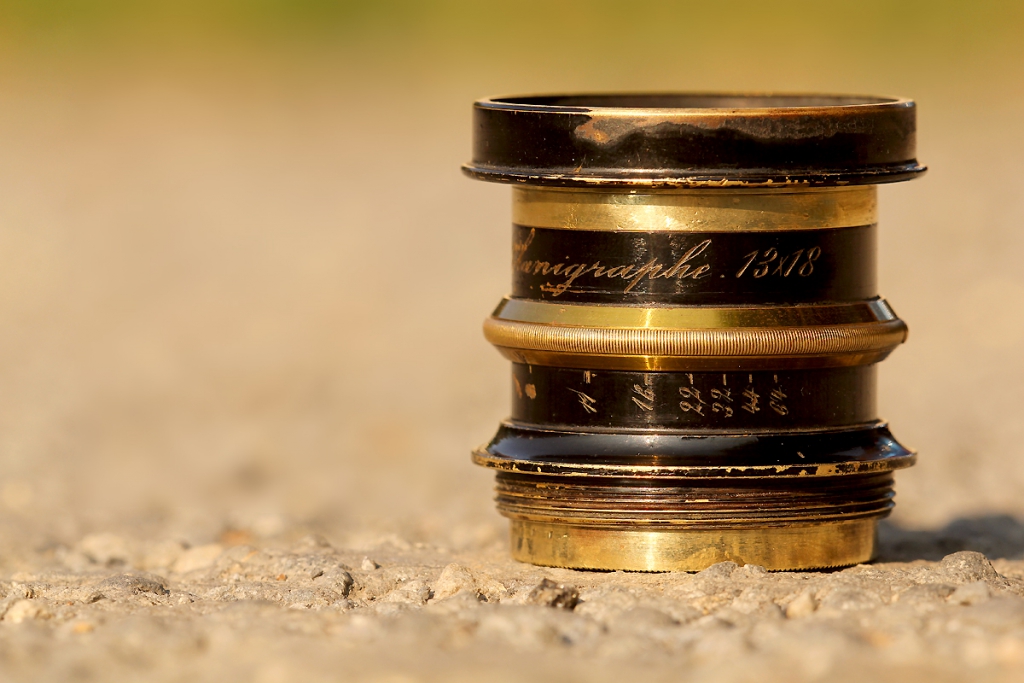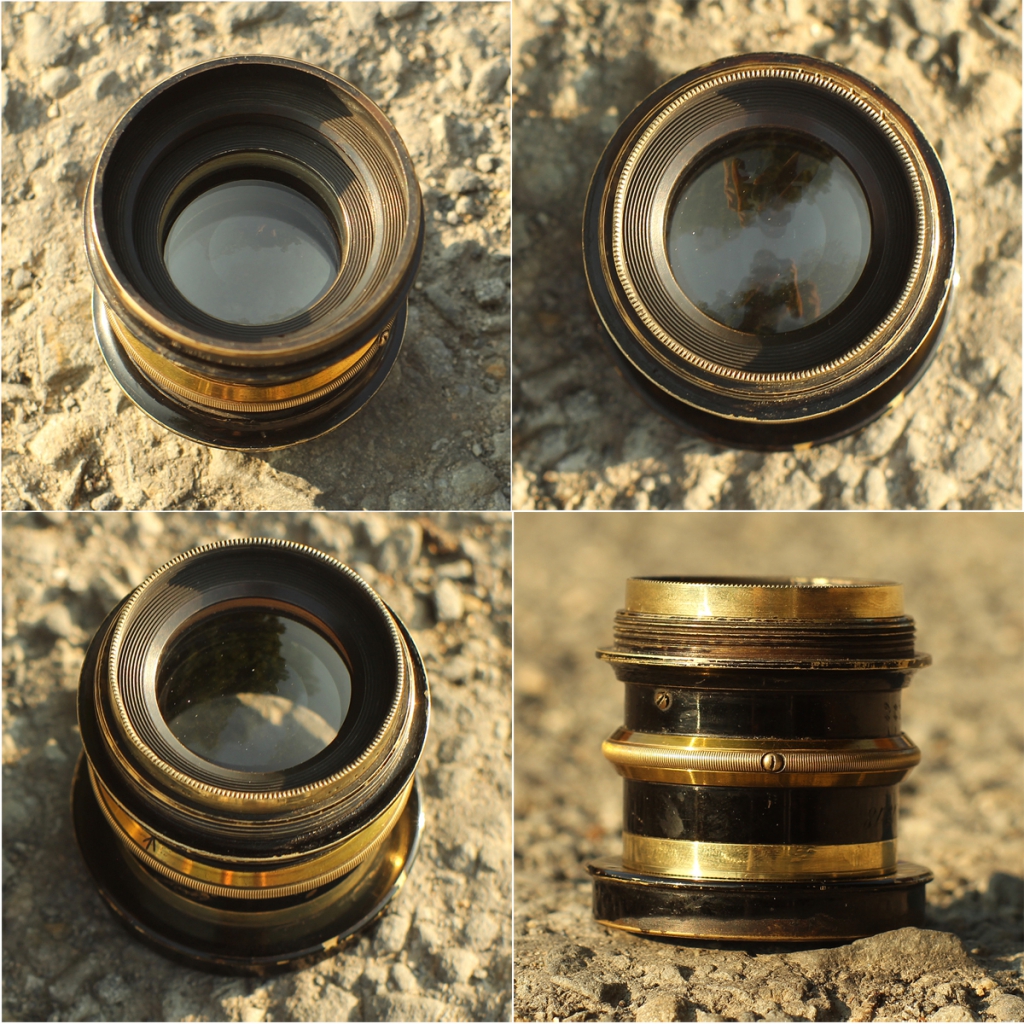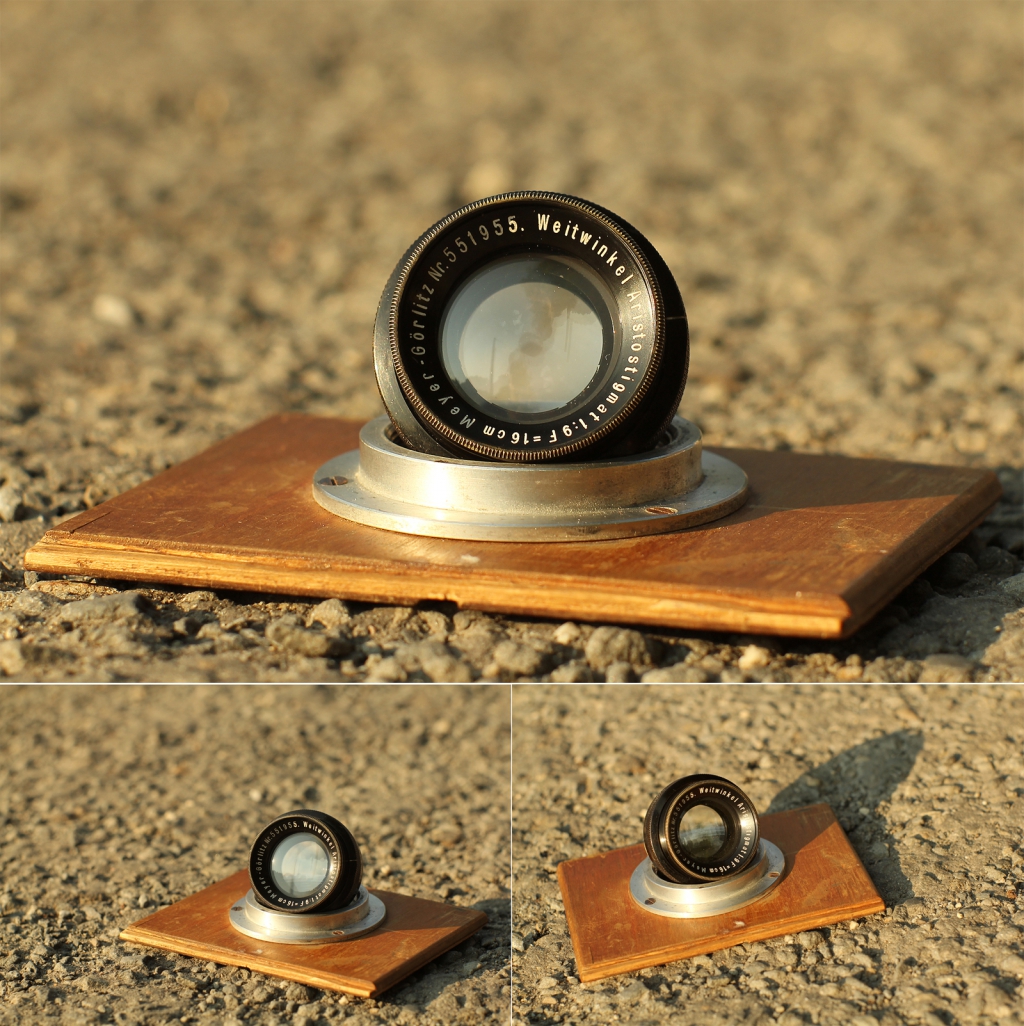| View previous topic :: View next topic |
| Author |
Message |
Marek


Joined: 13 Apr 2014
Posts: 903
Location: In the heart of Europe
|
 Posted: Thu Aug 13, 2015 10:15 pm Post subject: Antique brass lens of unknown origin - prize estimation Posted: Thu Aug 13, 2015 10:15 pm Post subject: Antique brass lens of unknown origin - prize estimation |
 |
|
Marek wrote:
Hi, got this lens as a part of a certain transaction a couple of weeks ago and let it cleaned and polished a bit, apparently very old, worn, but still somehow lovely and functional looking item that (I believe) came from some late 19th century or early 20th century small German manufacture?
Of course I am able to use "Antique brass lens" etc. at Ebay search but never actually find the same (of course!), got lost a bit, so so many various types of various value. Anyone dare to make approx. prize estimation or at least tell me some interesting background story about? Thanks in advance.


Just for curiousity, I am about to sell this one too but in this case the value is rather clear.

_________________
Angry young man !
Flickr | Juzaphoto | Ebay sales
marekfiser [at] gmail [dot] com |
|
| Back to top |
|
 |
iangreenhalgh1


Joined: 18 Mar 2011
Posts: 15679
Expire: 2014-01-07
|
 Posted: Thu Aug 13, 2015 10:18 pm Post subject: Posted: Thu Aug 13, 2015 10:18 pm Post subject: |
 |
|
iangreenhalgh1 wrote:
Those unmarked early brass lenses are usually worth little as they are very common and there is no way of knowing where they were made - there were a great deal of small workshops in many countries of Europe.
Unless it has a maker's name from a prestigious maker, value is not much.
_________________
I don't care who designed it, who made it or what country it comes from - I just enjoy using it! |
|
| Back to top |
|
 |
luisalegria


Joined: 07 Mar 2008
Posts: 6602
Location: San Francisco, USA
Expire: 2018-01-18
|
 Posted: Thu Aug 13, 2015 10:35 pm Post subject: Posted: Thu Aug 13, 2015 10:35 pm Post subject: |
 |
|
luisalegria wrote:
A better look at the name of the brass lens could help identify it.
I read "..nigraphe".
So I guess its French.
There were quite a few French makers.
It could be a Darlot, which had a "planigraphe"
Its got a diaphragm, which makes it from the 1880's or later probably 1890's.
_________________
I like Pentax DSLR's, Exaktas, M42 bodies of all kinds, strange and cheap Japanese lenses, and am dabbling in medium format/Speed Graphic work. |
|
| Back to top |
|
 |
luisalegria


Joined: 07 Mar 2008
Posts: 6602
Location: San Francisco, USA
Expire: 2018-01-18
|
 Posted: Thu Aug 13, 2015 10:43 pm Post subject: Posted: Thu Aug 13, 2015 10:43 pm Post subject: |
 |
|
luisalegria wrote:
Here is a Meyer Weitwinkel Aristostigmat f-16cm
Pretty much the same as yours.
Sold in Croatia US$82
http://www.ebay.com/itm/Meyer-Gorlitz-Weitwinkel-Aristostigmat-1-9-F-16cm-/131566914433?hash=item1ea1ffcb81
_________________
I like Pentax DSLR's, Exaktas, M42 bodies of all kinds, strange and cheap Japanese lenses, and am dabbling in medium format/Speed Graphic work. |
|
| Back to top |
|
 |
Lightshow


Joined: 04 Nov 2011
Posts: 3666
Location: Calgary
|
 Posted: Thu Aug 13, 2015 10:46 pm Post subject: Posted: Thu Aug 13, 2015 10:46 pm Post subject: |
 |
|
Lightshow wrote:
Could possibly be: Clement & Gilmer, Paris (From the Planigraph)
http://www.earlyphotography.co.uk/site/entry_L26.html
Looks like your lens here:
http://photoschool.narod.ru/13x18.html
_________________
A Manual Focus Junky...
One photographers junk lens is an artists favorite tool.
My lens list
http://www.flickr.com/photos/lightshow-photography/ |
|
| Back to top |
|
 |
Abbazz


Joined: 23 Jun 2007
Posts: 1098
Location: Jakarta
|
 Posted: Fri Aug 14, 2015 5:35 am Post subject: Posted: Fri Aug 14, 2015 5:35 am Post subject: |
 |
|
Abbazz wrote:
| luisalegria wrote: |
| It could be a Darlot, which had a "planigraphe" [...] Its got a diaphragm, which makes it from the 1880's or later probably 1890's. |
You are right on the mark, Luis, as the regretted Rudolph Kingslake lists the Planigraphe in its book "A History of the Photographic Lens" as dating from 1895:

Note that Mr Kingslake considers the Planigraphe as an economic lens with a rather weird design.
Here's the optical formula of the Planigraphe (5 elements in two groups):

But then, who was this Turillon? I have found a report on this lens in a French book published in 1896: "LES NOUVEAUTÉS PHOTOGRAPHIQUES ANNÉE 1896" (Photographic Novelties of the Year 1896), which mentions its creator. Here's an approximate English translation:
| Quote: |
THE PLANIGRAPHE
I like to see that the success of the foreign lenses seems to drive our French manufacturers to stir a bit. It would not really harm. Thus Mr. Turillon, successor to Mr. Darlot, just built a new lens, called Planigraphe, which works well at a normal aperture of F/10. It may even, in many cases, be used at any aperture, that is to say F/8. Its plane of focus is deep enough to allow adequate flexibility in focusing. This is always valuable when it comes to choosing a lens for a hand camera. This is definitely one of the best French lenses that we have at the present time.
The Planigraphe indicated for 13x18 has a focal length of 0.17m and its cone of sharpness embraces an angle of 55°. However, I believe that for a very good job, we should not take the numbers indicated by the manufacturer which, in my opinion, are a bit extreme. In other words, for a 13x18 camera, it's better to take the reference listed for 18x24. This, because the focal lengths of these lenses are actually too short for a good rendering of perspective. Under the pretext, quite a bit misleading, of seeking lens speed above all, the focal length is reduced as much as possible. It would be far better to seek to keep the focal long and to increase the aperture. But in general, lenses are manufactured without a lot of calculations, with only relying on the hazards of manufacturing to match the curvatures of the elements and the refractive indices of the glass to the perspective lines of the image rendered. However, it is by very precise calculation that some foreign lenses owe their fame and their real superiority. Returning to the Planigraphe, I mounted a 18x24 lens on a 13x18 camera, and I had a focal length of about 0.23m which is about right for the 13x18 format. Images taken in these conditions exhibit a good performance perspective and harmony in colors. It is therefore a good lens to shoot everything outdoors. |
In R. Kingslake's book, the notice about Darlot also mentions Turillon:

So Mr. Turillon, the creator of the Planigraphe, was the successor to Mr. Darlot. This may explain why there are Planigraphes that bear the name of Darlot, although Darlot had nothing to do with this lens and was already dead when the lens was launched:

Credit: Antiq-Photo
Here's a sample of the type of cameras that were equipped with the Planigraphe around the turn of the century:

Credit: Frederic C
Regarding Marek's lens, it is indeed an interesting piece of history. It won't be worth much money though, except if it bears somewhere the magical name of Darlot, which is to collectors like honey to bees...
Cheers!
Abbazz
_________________
Il n'y a rien dans le monde qui n'ait son moment decisif, et le chef-d'oeuvre de la bonne conduite est de connaitre et de prendre ce moment. - Cardinal de Retz
The 6x9 Photography Online Resource:
http://artbig.com/ |
|
| Back to top |
|
 |
Marek


Joined: 13 Apr 2014
Posts: 903
Location: In the heart of Europe
|
 Posted: Fri Aug 14, 2015 8:37 am Post subject: Posted: Fri Aug 14, 2015 8:37 am Post subject: |
 |
|
Marek wrote:
Thank you for loads of very detailed information! It is Darlot indeed 
_________________
Angry young man !
Flickr | Juzaphoto | Ebay sales
marekfiser [at] gmail [dot] com |
|
| Back to top |
|
 |
dan_


Joined: 05 Dec 2012
Posts: 1058
Location: Romania
Expire: 2016-12-19
|
 Posted: Fri Aug 14, 2015 10:16 am Post subject: Posted: Fri Aug 14, 2015 10:16 am Post subject: |
 |
|
dan_ wrote:
| Marek wrote: |
Thank you for loads of very detailed information! It is Darlot indeed  |
To be sure it is a Darlot you could check if the glass is signed, if dismantling it is not too difficult. Darlot used to sign their lenses. |
|
| Back to top |
|
 |
Marek


Joined: 13 Apr 2014
Posts: 903
Location: In the heart of Europe
|
 Posted: Fri Aug 14, 2015 10:51 am Post subject: Posted: Fri Aug 14, 2015 10:51 am Post subject: |
 |
|
Marek wrote:
| dan_ wrote: |
| Marek wrote: |
Thank you for loads of very detailed information! It is Darlot indeed  |
To be sure it is a Darlot you could check if the glass is signed, if dismantling it is not too difficult. Darlot used to sign their lenses. |
Too late but thanks for the tip for the next time.
_________________
Angry young man !
Flickr | Juzaphoto | Ebay sales
marekfiser [at] gmail [dot] com |
|
| Back to top |
|
 |
|
|
|
You cannot post new topics in this forum
You cannot reply to topics in this forum
You cannot edit your posts in this forum
You cannot delete your posts in this forum
You cannot vote in polls in this forum
|
